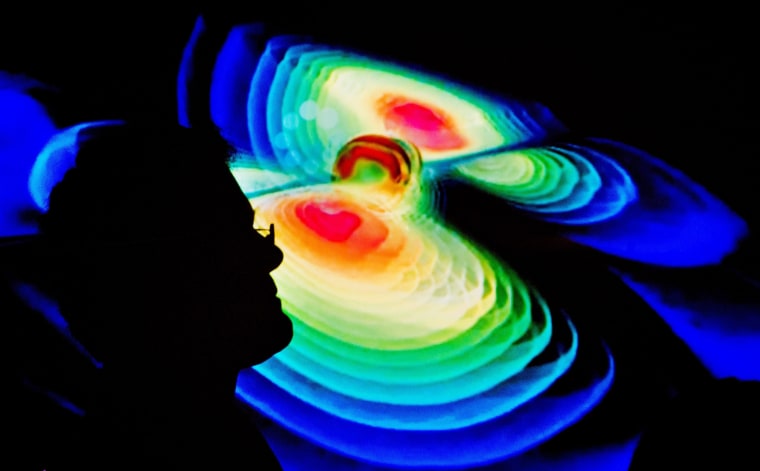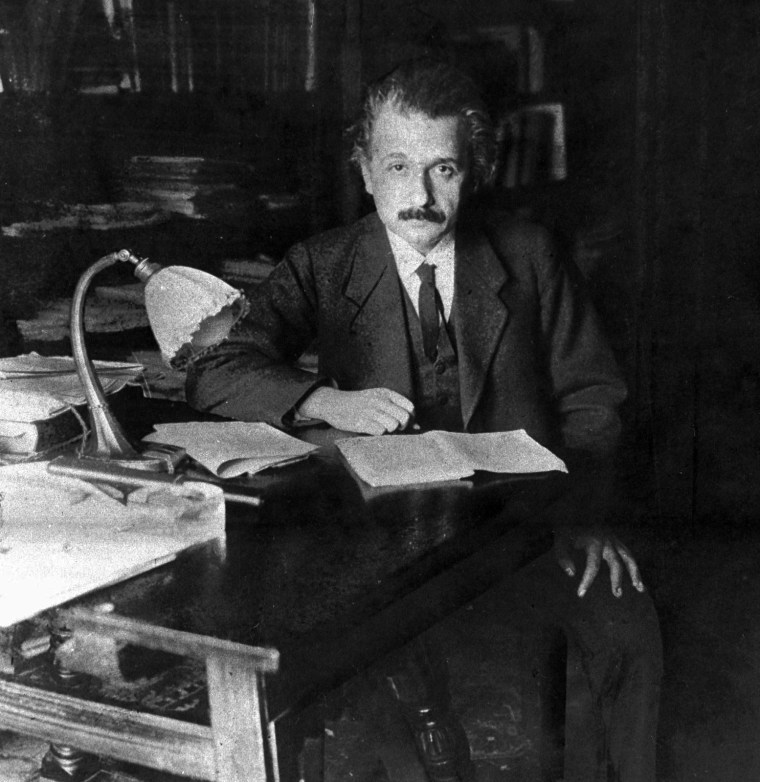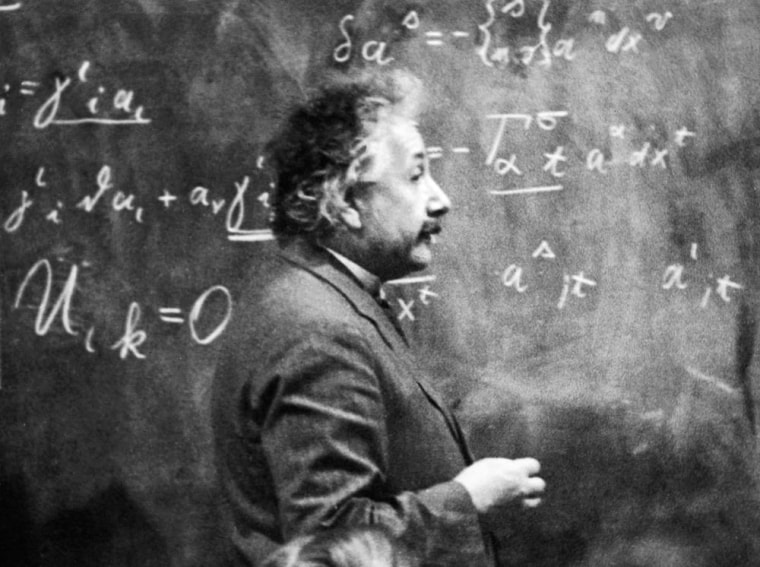Even people who know little about Albert Einstein’s work know he was brilliant — so clever that his name is synonymous with genius. Of course, the mind that gave us the theory of general relativity, the 1915 masterwork that sealed Einstein’s scientific reputation, was human. And so Einstein made his share of mistakes.
Here’s a close look at three times the great physicist, born on Pi Day (March 14) 139 years ago today, got things wrong.
1. Starlight bends — but how much?
Place a heavy ball on a sheet of rubber, and the ball's weight distorts the sheet. Einstein realized that something similar happens in space: Gravity from stars and other massive objects bends the paths of nearby light rays. If a ray of light from a distant star passes the sun on its way to Earth, for example, it should bend enough to cause a tiny shift in the observed position of the star.
It’s not easy to test this idea. For one thing, the shift is truly minute. And the blinding light of the sun can make distant stars hard to see. But astronomers realized that even a tiny shift ought to be visible during a total solar eclipse, when light from the sun is blotted out.

Einstein performed a series of calculations to determine the size of the predicted shift but initially muffed the effort, arriving at a number that was half the correct value.
Had the astronomers managed to test this number in their initial eclipse-viewing efforts, their observations wouldn’t have matched his prediction. But their attempts were stymied by weather in 1912 and by war in 1914. By the time they made the necessary observation, in the spring of 1919, Einstein had corrected his blunder — and astronomers saw exactly the shift that he had predicted.
2. Gravitational waves don’t exist — or do they?
The discovery of gravitational waves in 2016 was hailed as a triumph of Einstein’s theory, the confirmation of a prediction made in 1916. But as you might suspect, there’s more to the story.
Soon after developing general relativity, Einstein began to wonder if there might be a wave associated with gravity as there is with electromagnetism. (Electromagnetic waves include visible light as well as radio waves, microwaves, and X-rays.)
Einstein moved on to other problems. When he returned to it two decades later, he concluded that gravitational waves couldn’t exist because they’d create “singularities” — regions in which space and time are stretched to infinity.

But Einstein had goofed because of the mathematical coordinate system he used to tackle the problem. It's a bit like what happens with the latitude and longitude used to track positions on Earth, says University of Arkansas physicist Daniel Kennefick. It works fine in most places on the planet. But as one gets close to the poles, lines of longitude converge and the system breaks down.
"It doesn't mean the North Pole doesn't exist — it's a real place — it's just that the coordinate system breaks down," Kennefick says.
Einstein hadn't shown that gravitational waves couldn't exist, only that they couldn't exist in the mathematical system that he'd used.
When Einstein submitted a paper arguing that gravitational waves don't exist to Physical Review, the journal’s editor sent it back to for revisions. Outraged, Einstein withdrew it. By the time he submitted it to another journal, he had corrected his mistake. The revised paper argued that gravitational waves do, in fact, exist.
3. Einstein and the expanding universe
Einstein was uncomfortable with some of relativity’s implications, including one of the biggest — that the universe isn’t a static thing but an entity that must expand or contract. This was unthinkable to Einstein, who believed the universe existed in a “steady state.”
So Einstein added a fudge factor to his equations, a kind of energy associated with empty space. This cosmological constant allowed for a stable universe. But sure enough, astronomers in the 1920s confirmed that the universe was expanding. Einstein later called the cosmological constant the “greatest blunder” of his career.
Einstein's resistance to the idea of an expanding universe makes sense in light of his classical education, says Marcia Bartusiak, a science journalism professor at MIT and the author of several books on the history of physics. His schooling took place in the 1880s and 1890s, when the prevailing wisdom — based on physics going back to the work of Isaac Newton — was that the universe was static. An expanding cosmos simply "didn't fit with his view of how the universe acted," she says. But when astronomers showed Einstein the data, he came around.
“He listened to the evidence, from [astronomer Edwin] Hubble,” Bartusiak says. "He admitted his error.”
(In the late 1990s, astronomers discovered that the universe is not only expanding but expanding at an accelerating rate. Now they wonder if something like Einstein’s cosmological constant is playing a role — which means his earlier “mistake” may in fact have been an idea ahead of its time.)

Einstein’s errors take nothing away from his extraordinary achievements. Indeed, they would hardly be noteworthy if they involved a lesser thinker. And the fact that he didn’t let himself be derailed by his missteps — that he changed course in light of new evidence — is a hallmark of his brilliance, says historian Jürgen Renn.
“He persisted, in spite of incredible obstacles, in spite of the errors,” says Renn, director of the Max Planck Institute for the History of Science in Berlin. “And in the end, he came up with one of the most revolutionary theories in all of physics.”

